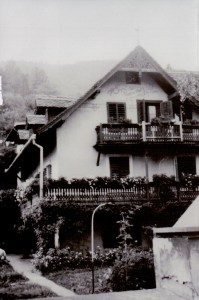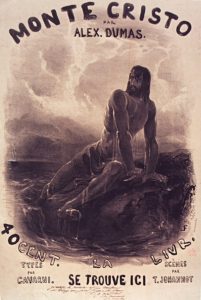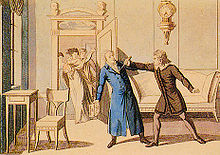Autumn has certainly arrived up here in the Blue Mountains, and our garden is rapidly turning into a wonderland of colour. More than one third of the plants and trees in the garden are deciduous and are gradually changing into a blaze of yellow and red. While it is now a little too cold to work outside, I have a great view into the garden from my attic where I do most of my writing. Here, let me show you:

For me, autumn is a time for reflection as nature changes from the long, hot summer days to cool nights and foggy mornings and the days get shorter, heralding the winter to come.

As I’ve mentioned many times before, feedback from readers like you is of great importance to me. From time to time, a comment, a Facebook post, or a review stand out. One review in particular did just that, and I would like to share it with you now if I may. It is a review of the Kimberley Secret by The Content Reader and you can find it by following this link:
https://thecontentreader.blogspot.com Wednesday, 3 April
As most of you would be aware, the Kimberley Secret is the prequel to the Jack Rogan Mysteries series and is available for free on Amazon. In fact, you can download it right now if you haven’t already done so by following this link:
https://www.amazon.com/gp/product/B07HXP6C88
The Kimberley Secret is also part of my Starter Library, which you can also download for free by following this link:
https://gabrielfarago.com.au/starter-library/
If you are already familiar with all this, then may I ask you to perhaps introduce one of your friends to the Starter Library and forward this newsletter, or the link to them? As my valued ‘literary ambassadors’ you are my eyes and ears in that big bookstore out there, and therefore well-positioned to introduce my work to fellow readers who may enjoy the Jack Rogan Mysteries series as you obviously do.
HOOKED on CLASSICS

This month I would like to introduce you to another favourite author of mine – a giant- who has had a great influence on my writing: Alexandre Dumas (1802 – 1870).

Who hasn’t heard of such wonderful classics as the Three Musketeers, The Count of Monte Cristo, or The Black Tulip? I grew up with these books in my grandfather’s attic in Austria all those years ago. I remember going up there after school and spending hours devouring these books rather than doing homework. Athos, Porthos and D’Artagnan became good friends, and I imagined sword fights down in the gardens below, and horse-drawn carriages passing through the gates accompanied by musketeers escorting a princess or a cardinal to the castle next door.
My grandfather’s hunting lodge just behind a fabulous Castile – Schloss Eggenberg – was a wonderful place to grow up in and let your imagination run free.

Many hours were spent in the magical grounds of the Schloss, whispering of a romantic past. Here, let me show you:

Born into an aristocratic family – Dumas’ father was a French general – Dumas found recognition and success as a writer early in life. He travelled extensively and lived in various countries. After leaving France in 1851, he lived in Belgium for a number of years before moving first to Russia and then to Italy where he founded and published a newspaper which supported the unification of Italy.
Dumas was a most prolific writer – he published over 100,000 pages in his lifetime – and wrote in several genres. Early in his career, Dumas wrote magazine articles and plays for the theatre. These plays provided him with sufficient income to become a full-time writer. Soon after this, he turned to writing novels for which of course he is best known today.
Up there in my grandfather’s attic, I came across an eight volume collection of essays written by Dumas between 1839 and 1841, featuring famous – or should I say infamous – criminals and crimes sourced from European history. These essays had a profound influence on me later on as I turned to fascinating historical characters and crimes as the source and inspiration of many of my stories and characters featured in my books. It is for that reason that I have decided to include another regular segment in my newsletters going forward, namely,
A Page in History: Crime of the Month, featured for the first time below.
Out of all of Dumas’ wonderful books, the one that stands out and has affected me most was The Count of Monte Cristo, a literary classic, completed in 1844. It is a tale of high adventure set in France and Italy and begins just before Napoleon returned to power after his exile. Vengeance, mercy, forgiveness rub shoulders with despair, hope and pain in a man wrongly imprisoned who escapes from jail, makes a fortune and then sets out to exact revenge on those responsible with devastating consequences on both the guilty, and the innocent.

If you haven’t read any of Dumas’ books, I would recommend you start with this one. If, like me, you have read it many years ago, do read it again. You will see it with different eyes and find new, timeless hidden gems that are as relevant today, as they were when the story was conceived. You can easily find the book on Amazon and Goodreads and other major platforms.
Now, I would like to turn to something new and exciting I am sure you will enjoy.
INTRODUCING: A Page in History: Crime of the Month

I would like to begin this segment with the tragic story of Karl Ludwig Sand, a German university student with strong nationalist beliefs who lived in the nineteenth century. I first came across this fascinating story in Dumas’ collection of essays about historic crimes, and the book he later wrote about these events entitled, Karl Ludwig Sand.
In essence, this crime was all about a very public and brutal assassination of August von Kotzebue, a German dramatist and writer who was considered a traitor by nationalist students who gathered at the 1817 Wartburg festival during which Kotzebue’s History of the German Empires was ceremoniously burnt.
A young student, Karl Ludwig Sand – a passionate nationalist firebrand and member of the notorious Burschenschaft, a German nationalist student organisation – was among those who attended this famous festival. It was during this time that he contemplated the murder of Kotzebue whom he called a ‘traitor to the nation’ and ‘deceiver of the people,’ in a diary entry in May 1918. But it wasn’t until March the following year that Sand carried out his daring plan.
On the morning of 23 March 1818, Sand attempted to visit Kotzebue in his home in Mannheim, but was refused entry. He was told to return later which he did, and by using the pseudonym Henry, was allowed to enter. Planning murder and mayhem, he confronted Kotzebue in the parlour and, shouting: ‘Here you traitor to the fatherland,” stabbed him repeatedly in the chest with a dagger in plain view of Kotzebue’s four-year-old-son who witnessed the bloody murder. After Kotzebue fell to the floor, mortally wounded and dying, Sand tried to kill himself by stabbing himself repeatedly in the chest, but failed.

A sensational trial followed, and on 5 May 1820, Sand was sentenced to death and later beheaded.

The Sand case had serious political consequences and resulted in the Carlsbad Decrees which outlawed the student organisations, and severely curtailed the freedom of the press in the German Confederation for many years to come.
Alexandre Dumas, who was very passionate about these subjects, wrote extensively about Sand’s life and beliefs and published excerpts from his letters and journals in his book, Karl Ludwig Sand.
Alexander Pushkin wrote a famous poem about Sand, entitled “Kinzhal” (The Dagger), and several German films have been made about Sand’s life and beliefs and the far-reaching consequences of his crime.
As I have pointed out several times before, I draw my inspiration from history and real life characters in order to create a seamless storyline that is both relevant, and engaging. In doing this, I try to weave fact and fiction together, blurring the boundaries between the two, so that the reader is never quite sure where one ends and the other begins. This is of course quite deliberate as it creates the illusion of authenticity in a work that is pure fiction. A successful work of fiction is a balancing act: reality must rub shoulders with imagination in a way that is both entertaining and plausible.
I hope you enjoyed our inaugural segment – A Page in History: Crime of the Month – and found it interesting and informative. Please let me know if I have succeeded, because if I did, I will include this segment in my newsletters going forward.





